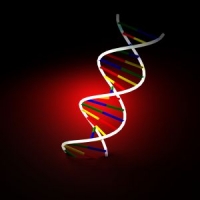Storing Data in DNA: It's a Game Changer

It seems like just last year that we were discussing the pollution and unbridled energy consumption of the data centers of Google, eBay, and Facebook—because it was, after all, just last year. I just didn’t expect a solution to come as quickly and futuristically as storing that same data—and limitless additional data—on microscopic strands of DNA.
Nick Goldman and Ewan Birney of the European Bioinformatics Institute in the United Kingdom championed the new storage solution, and when you read the explanation of how they did it, nothing against these two or the EBI, it’s a wonder we didn’t think of this sooner.
The trick to this fidelity lies in the way the researchers translate their files from the hard drive to the test tube. DNA uses four chemical 'bases'—adenosine (A), thymine (T), cytosine (C), and guanine (G)—to encode information. The team’s solution was to translate the binary computer information into ternary (a system that uses three numerals: 0, 1, and 2) and then encode that information into the DNA.
NPR’s Adam Cole recently interviewed the two scientists, who explained that the reason they first looked into DNA as a big data storage alternative is pretty obvious. In the interview below, they state “We realized that DNA itself is a really efficient way of storing information.”
Does this mean that our sprawling data centers, even the energy efficient ones, will soon be abandoned or at the very least severely scaled-down? Perhaps, but not just yet. The Economist reports:
There are downsides to DNA as a data-storage medium. One is the relatively slow speed at which data can be read back. It took the researchers two weeks to reconstruct their five files…
The other disadvantage is cost. Dr. Goldman estimates that, at commercial rates, their method costs around $12,400 per megabyte stored. That is millions of times more than the cost of writing the same data to the magnetic tape currently used to archive digital information.
Of course, these are only present day problems. Better reconstructing equipment will undoubtedly be developed, and the cost of DNA writing is getting cheaper by the year.
Another advantage of DNA data storage is that, as long as the strands are kept cool and dry, “DNA remains readable for tens of thousands of years.” The magnetic tapes currently in use must be replaced every few years, which is hardly a sustainable method for the future.
It’s difficult to imagine anything more efficient than the worldwide acceptance of DNA storage, and it’s even harder to imagine something coming along one day that will push DNA into the trash heap of the storage solutions of old.
No generation should ever assume it is at the pinnacle of ingenuity; it never is.

